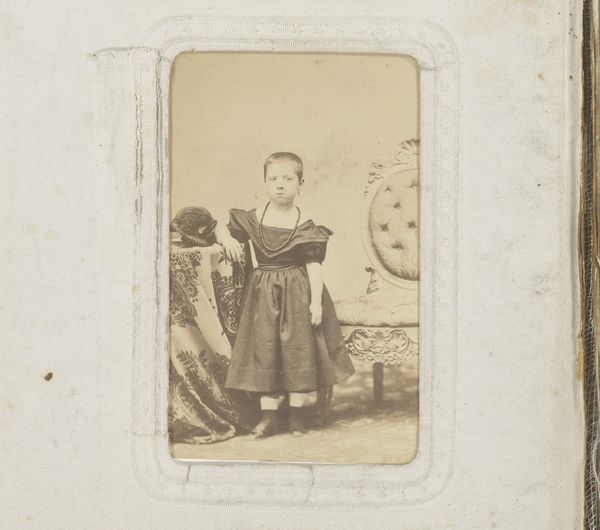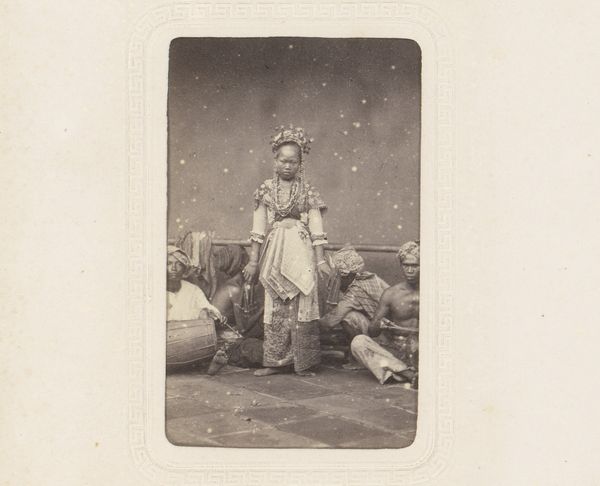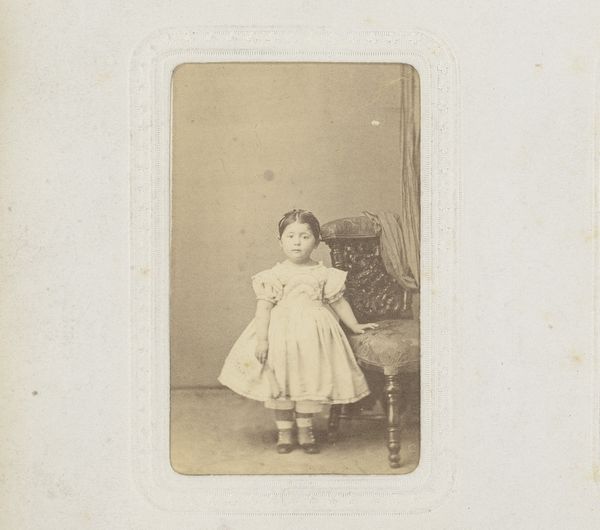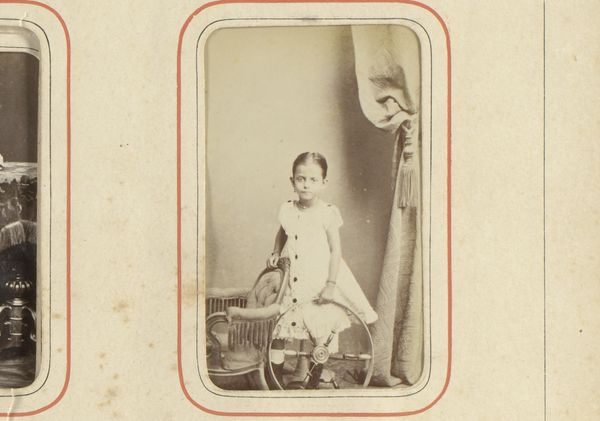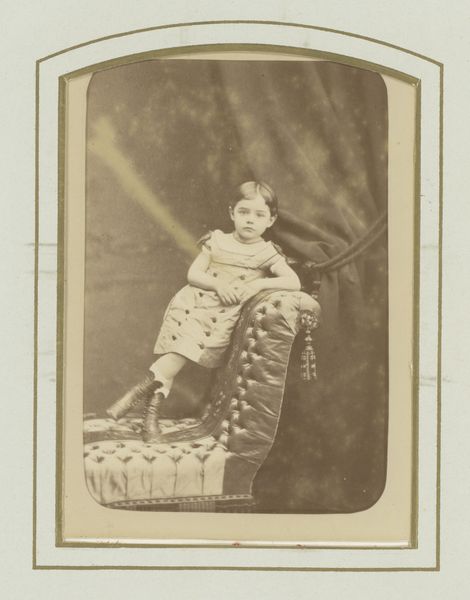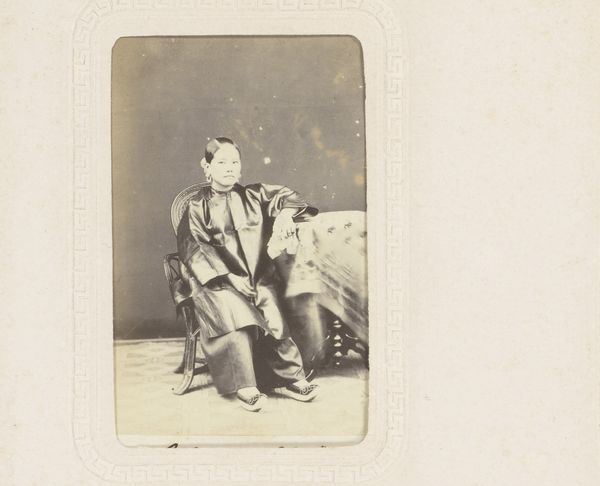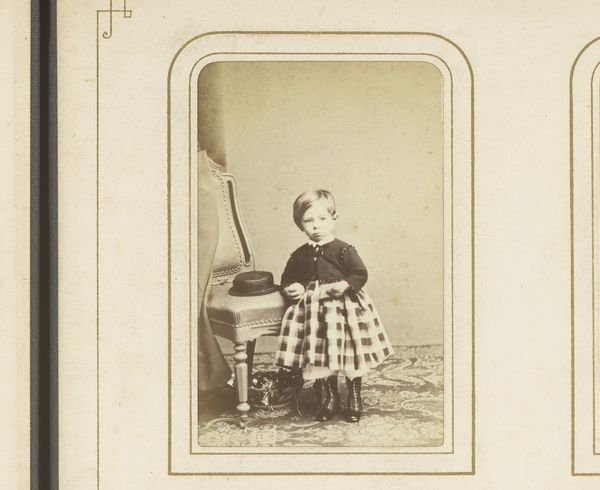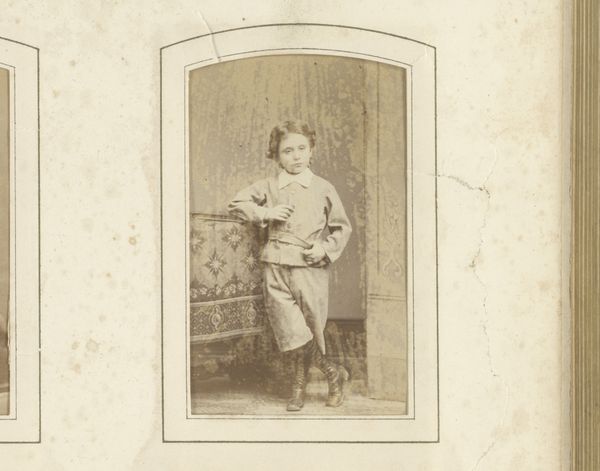
print, daguerreotype, photography
#
portrait
#
16_19th-century
# print
#
daguerreotype
#
photography
#
realism
Dimensions: 8.6 × 5.2 cm (image/paper); 10.6 × 6.2 cm (mount)
Copyright: Public Domain
Editor: Here we have André-Adolphe-Eugène Disdéri's photograph, "Prince Imperial," circa 1860. It's a beautifully preserved print, depicting a young boy on a toy horse, exuding an air of gentle authority despite his age. What can you tell me about it? Curator: This portrait offers a fascinating glimpse into the construction of imperial identity through photography. Disdéri, a shrewd businessman and innovator, capitalized on the carte-de-visite format to mass-produce images of the elite. What do you think that this seemingly innocuous image may have been aiming at, within the political context of the Second Empire? Editor: I suppose that by widely circulating these images, they're essentially crafting a brand for the monarchy. Something about portraying the boy with a regal demeanor helps build public perception. It appears as the ideal heir for leadership. But is it as innocent as that? Curator: Exactly. Images like this, while seemingly domestic, served to normalize and legitimize Napoleon III’s regime. Consider the choice of props—the toy horse, a symbol of nobility and military prowess. What message does that convey about the expectations placed upon this young boy, and the projection of imperial power for the people? Editor: So it's more than just a portrait; it's carefully curated propaganda? Curator: Precisely. This photograph participated in the construction of an imperial narrative. By studying images like this, we can unpack the complex relationship between art, power, and the public's perception. Editor: It’s incredible how a simple photograph can reveal such a intricate narrative about power and image-making! I hadn't thought about it as being quite so purposeful when I first viewed the image. Curator: Understanding the historical and social contexts enriches our interpretation of even seemingly simple works of art.
Comments
No comments
Be the first to comment and join the conversation on the ultimate creative platform.

